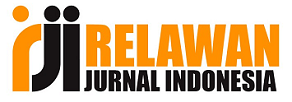Implementation of the Approach Measurement of Inclusive Financial Index in the Five Best Sharia Banks in Indonesia
DOI:
https://doi.org/10.30762/realita.v21i2.157Keywords:
Measurement, Index Finance, Inclusive, Bank ShariaAbstract
Islamic banks carry out their role as intermediaries with Islamic principles. Inclusive finance is an effort to realize that all people in the community can enjoy facilities in the financial system. The purpose and objective of inclusive finance is to eliminate all obstacles in any form to the access of the entire community to use services in financial services supported by existing facilities. The financial inclusion index is an index to measure how much services to inclusive finance have been utilized by a country.
This study aims to analyze the Category of Accessibility Index, Avalability and Usability at BSM, Muamalah Bank, BNI Syariah Bank, BRI Syariah and Mega Syariah Bank. In addition, t also analyzes the BSM Financial Inclusive Index category, Bank Muamalah, Bank BNI Syariah, BRI Syariah and Bank Mega Syariah.
This study uses descriptive non-statistical quantitative research methods
The results of this study indicate that Bank Muamalat and Bank Syariah Mandiri have a high category of accessibility and usability index, however for the Avalability Index, Bank Muamalat is in the medium category and Bank Syariah Mandiri is in the high category. BRI Syariah and BNI Syariah have a medium category for the Index of Accessibility, Availability and Usability. Meanwhile, Bank Mega Syariah has a low category for the Index of Accessibility, Availability and Usability. The Financial Inclusion Index is in the high category at Bank Muamalat and Bank Syariah Mandiri, for BRI Syariah in the medium category and Bank Mega Syariah in the low category.
Downloads
References
Allen, Franklin, Asli Demirguc-Kunt, Leora Klapper, dan Maria Soledad Martinez Peria. 2014.
The Foundations of Financial Inclusion: Understanding Ownership and Use of Formal Accounts. Journal of Financial Intermediation.
Ansar, S., & Hess, J. 2018. The Global Findex Database 2017 Measuring Financial Inclusion and The Fintech Revolution. Washington DC: World Bank Group.
Bachtiar Hassan Mirza. 2014. Membangun Keuangan Inklusif. Jurnal Fakultas Ekonomi Universitas Sumatra Utara, Vol. 23, No. 2
Chauvet, L., & Jacolin, L. 2017. Financial Inclusion, Bank Concentration, and Firm Performance. World Development, 97, 1–13. https://doi.org/10.1016/j.worlddev.2017. 03.018
Cnaan, R, M. Moodithaya, dan F. Handy. 2012. Financial Inclusion: Lessons from Rural South India. Journal of Social Policy, Volume 41 Pages 183-205.
Dienillah, A. A., & Anggraeni, L. 2016. Dampak Inklusi Keuangan Terhadap Stabilitas Sistem Keuangan di Asia. Buletin Ekonomi Moneter Dan Perbankan, 18(4), 409–430.
Dienillah, Azka Azifah dan Lukytawati Anggraeni. 2016. Dampak Inklusi Keuangan terhadap Stabilitas Sistem Keuangan di Asia. Buletin Ekonomi Moneter dan Perbankan, Volume 18, Nomor 4.
Dienillah, A. A., & Anggraeni, L. 2017. Impact of Financial Inclusion on Financial Stability Based on Income Group Countries. Bulletin of Monetary Economics and Banking, 20(4), 1–14.
Dev, S. Mahendra. 2006. Financial Inclusion: Issues and Challenges. Political Weekly, 41(41): 4310-4313.
Endri. 2008. Analisis Faktor-faktor yang Mempengaruhi Inflasi di Indonesia. Jurnal Ekonomi Pembangunan, Vol. 13 No. 1.
Evans, Olaniyi. 2016. The Effectiveness of Monetary Policy: Modeling the Impact of Financial Inclusion. Iranian Economic Review, Vol. 20 No. 4: 327-337.
Evans, Olaniyi dan Babatunde Adeoye. 2016. Determinants of Financial Inclusion in Africa: a Dynamic Panel Data Approach. University of Mauritius Research Journal, Vol. 22.
Faith, Angella Lapukeni. 2015. The Impact of Financial Inclusion on Monetary Policy Effectiveness: The Case of Malawi. International Journal of Monetary Economics and Finance, Vol. 8(4): 360-384.
Gujarati, Damodar. 2003. Ekonometrika Dasar. Edisi Enam. Jakarta: Erlangga
Islam, Md. Ezazul., dan Md. Salim Al Mamun. 2011. Financial Inclusion: The Role of Bangladesh Bank. Working Paper Series WP1101. Dha- ka, Bangladesh: Bangladesh Bank Website: https://www.bb.org.bd/pub/research/work- INGPAPER/WP1101.PDF
Kabakova, O., & Plaksenkov, E. 2018. Analysis of factors affecting financial inclusion : Ecosystem view. Journal of Business Research, 89(June 2017), 198–205.
Khan, Harun Rashid. 2011. Financial Inclusion and Financial Stability: are Two Sides or the Same Coin? BIS Central Banker. Bank For International Settlements.
Lia Nazliana, dkk. 2013. Determinan Keuangan Inklusif Di Sumatra Utara, Indonesia. Jurnal Ekonomi Dan Studi pembangunan Univeritas Pembangunan Panca Budi Sumatra Utara, Vol. 14, No. 1
Mbutor, O., dan Ibrahim A. Uba. 2013. The Impact of Finanacial Inclusion on Monetary Policy in Nigeria. Journal of Economics and International Finance, Vol. 5(8): 318-326.
Muhajir, dkk. Kajian Inklusi Pada Sentra Industri Kecil Di Jawa Timur. Jurnal Universitas UPN Veteran Jawa Timur
Nengsih, Novia. 2015. Peran Perbankan Syariah dalam Mengimplementasikan Keuangan Inklusif di Indonesia. E-Journal Syarif Hidayatullah State Islamc University (UIN) Jakarta, Vol. 14(2): 221-240.
Onaolapo, Ayomide R. 2015. Effect of Financial Inclusion on the Economic Growth of Nigeria (1982-2012). European Centre for Research Training and Development UK, Vol. 3(8): 11-28.
Rangarajan Committee. (2008). Report of the Committee on Financial Inclusion. Government of India.
Sasmita, Tyas Dwi. 2011. Analisis Dampak Langsung (Pass-Through Effect)
Sarma, M. (2012). Index of Financial Inclusion – A measure of financial sector inclusiveness.
Sarma, M. 2008. Index of Financial Inlusion. ICRIER Working Paper 215.
Sarma, M., and J. Pais. (2008). Financial Inclusion and Development: A Cross Country Analysis. Paper. Presented at the Conference on Equality, Inclusion and Human Development organized by HDCA and IHD, New Delhi.
Sarma, M. (2012). Index of Financial Inclusion – A measure of financial sector inclusiveness.
Setyani, dkk. 2013. Model Inklusi Keuangan Pada UMKM Berbasis Pedesaan. JurnalUniversitas Negri Semarang, ISSN: 1971-715X
Sinclair, S. (2001). Financial Exclusion: An Introductory Survey. Edinburgh: CRSIS/Heriot-Watt University.
Stability: Current Policy Issues. ADBI Working Paper 259: Asian Development Bank Institute.
Sanajaya, I Made dan Nursechafia. 2015. Inklusi Keuangan dan Pertumbuhan Inklusif: Analisis Antar Provinsi di Indonesia. Buletin Ekonomi Moneter dan Perbankan, Volume 18, Nomor 3.
Shankar, Savita. 2013. Financial Inclusion in India: Do Microfinance Institutions Address Access Barriers?. ACRN Journal of Entrepreneurship Perspectives, Vol. 2, Terbitan 1, halaman. 60-74.
Siringoringo, Renniwaty. 2012. Karakteristik dan Fungsi Intermediasi Perbankan di Indonesia. Buletin Ekonomi Moneter dan Perbankan, Juli 2012.
Soederberg, S. 2013. Universalising Financial Inclusion and the Securitisation of Development. Third World Quarterly, Volume 34 Pages 593-612.
Zins, Alexandra dan Laurent Weill. 2016. The Determinants of Financial Inclusion in Africa. Review of Development Finance, No. of Pages 12.
Downloads
Published
How to Cite
Issue
Section
License
Copyright (c) 2023 Naning Fatmawati

This work is licensed under a Creative Commons Attribution-ShareAlike 4.0 International License.











